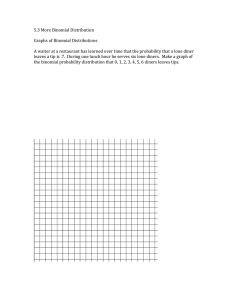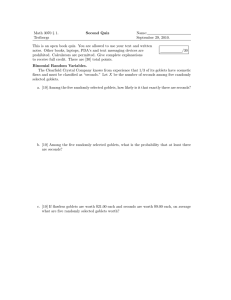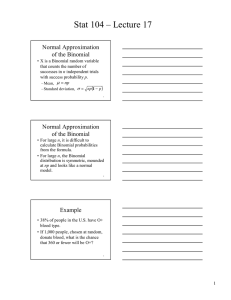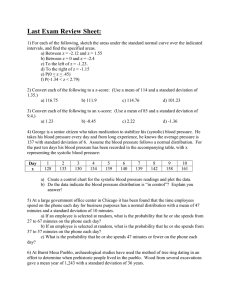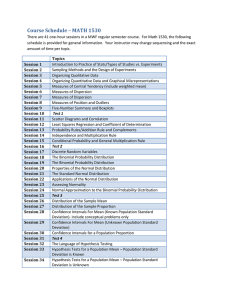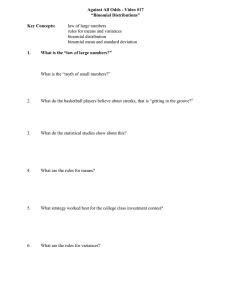Solution
advertisement
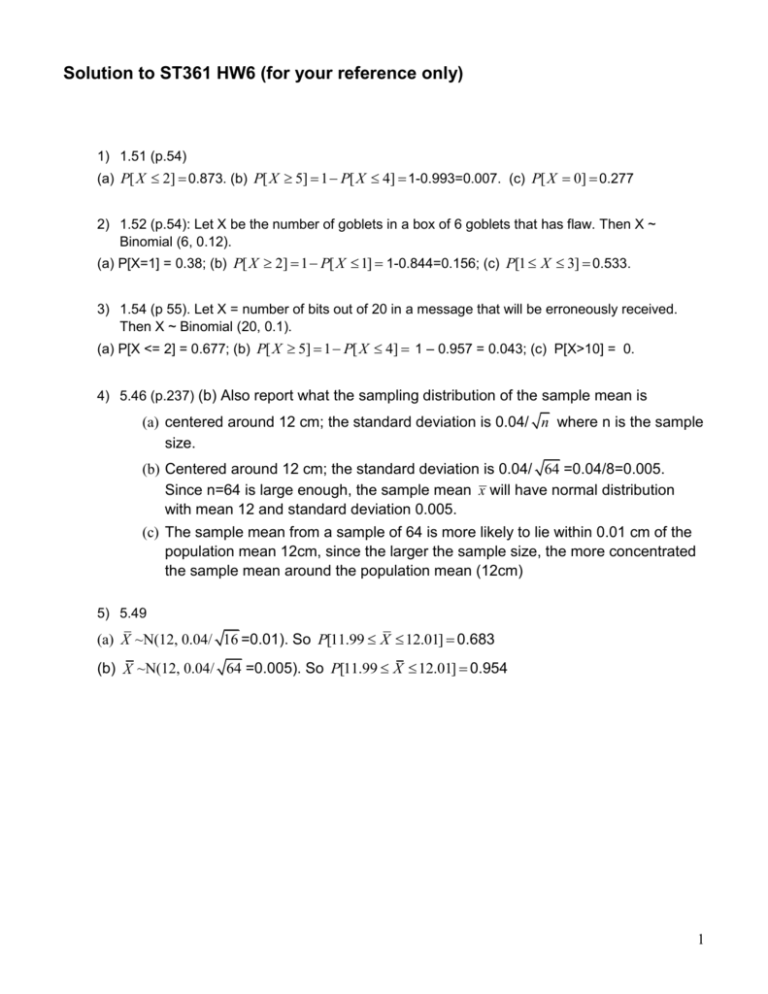
Solution to ST361 HW6 (for your reference only) 1) 1.51 (p.54) (a) P[ X 2] 0.873. (b) P[ X 5] 1 P[ X 4] 1-0.993=0.007. (c) P[ X 0] 0.277 2) 1.52 (p.54): Let X be the number of goblets in a box of 6 goblets that has flaw. Then X ~ Binomial (6, 0.12). (a) P[X=1] = 0.38; (b) P[ X 2] 1 P[ X 1] 1-0.844=0.156; (c) P[1 X 3] 0.533. 3) 1.54 (p 55). Let X = number of bits out of 20 in a message that will be erroneously received. Then X ~ Binomial (20, 0.1). (a) P[X <= 2] = 0.677; (b) P[ X 5] 1 P[ X 4] 1 – 0.957 = 0.043; (c) P[X>10] = 0. 4) 5.46 (p.237) (b) Also report what the sampling distribution of the sample mean is (a) centered around 12 cm; the standard deviation is 0.04/ n where n is the sample size. (b) Centered around 12 cm; the standard deviation is 0.04/ 64 =0.04/8=0.005. Since n=64 is large enough, the sample mean x will have normal distribution with mean 12 and standard deviation 0.005. (c) The sample mean from a sample of 64 is more likely to lie within 0.01 cm of the population mean 12cm, since the larger the sample size, the more concentrated the sample mean around the population mean (12cm) 5) 5.49 (a) X ~N(12, 0.04/ 16 =0.01). So P[11.99 X 12.01] 0.683 (b) X ~N(12, 0.04/ 64 =0.005). So P[11.99 X 12.01] 0.954 1

